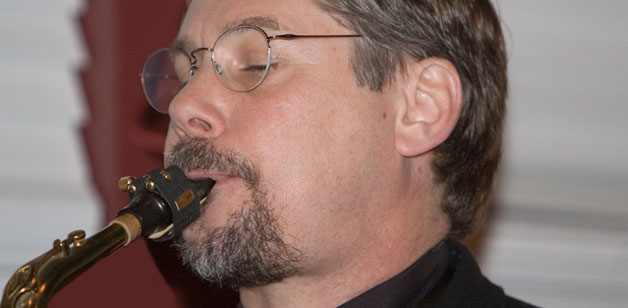A Look at the World’s Most Popular Saxophone Embouchure
 I remember taking my younger nephew to a musical exhibit on one of our most memorable family vacations. It was called Amazing Music Studio and it gave attendees the opportunity to pick an instrument of interest and learn, over the course of a few hours, the basics of that instrument. Rather than just pressing buttons on various horns, the child was asked to focus on just one and actually learn something of value.
I remember taking my younger nephew to a musical exhibit on one of our most memorable family vacations. It was called Amazing Music Studio and it gave attendees the opportunity to pick an instrument of interest and learn, over the course of a few hours, the basics of that instrument. Rather than just pressing buttons on various horns, the child was asked to focus on just one and actually learn something of value.
You can imagine my excitement when my nephew picked the saxophone and I was able to stand by and watch as he explored fundamentals such as posture and embouchure. Although I’d been playing for years, I still remember the simple breakdown they created to help youngsters see and understand embouchure. Read on to learn what we learned that day at The Children’s Museum.
The Single-Lip Embouchure
The most popular, prominently taught embouchure is the single-lip embouchure, which is normally used in concert and marching bands as well as classical music. This embouchure involves tucking your bottom teeth under your bottom lip, just until your teeth are covered. Then, pull your lips nearly closed. Think of closing a drawstring bag – don’t pucker your lips!
Now, put the mouthpiece in your mouth with your top teeth resting on the top and your bottom lip pressed firmly against the reed. Make sure you don’t bite the mouthpiece or you could end up hurting your lips. Usually around one inch of the mouthpiece should be in your mouth, but that can vary depending on the tonal character you’re going for. A good rule of thumb is to take the mouthpiece in to the point where the reed separates from the bottom of the mouthpiece.
Finally, press the corners of your mouth and your top lip against the mouthpiece, forming an airtight seal all the way around. Make sure you’re using your lips to make the seal and not biting down on the mouthpiece. It’s more difficult this way at first, but you’ll eventually build up the muscles in your lips.
A double-lip embouchure is similar to the single, except that you tuck your top teeth under your top lip, too. The double embouchure is a hallmark of jazz saxophonists, having been used by icons like John Coltrane.
Whether you use a single or double-lip embouchure, the key is to keep your mouth fairly loose. Don’t pinch the reed! You want to create a tight seal around the mouthpiece while still allowing the reed to vibrate. You also want to make sure you’re not hurting your lips by checking the amount of pressure you’re applying with your teeth; you shouldn’t be biting the mouthpiece, just holding it. Practice diaphragmatic breathing to help you build more powerful lungs to play stronger, longer notes.
On the Other Hand…
Espoused by greats such as George Garzone and Jerry Bergonzi is the “no embouchure embouchure” where the lip is positioned naturally, not necessarily in or out. But that’s a topic for a whole other article which you can read here.
How About You?
Being that we’re talking about human beings with an infinite number of subtleties in the makeup of the facial muscles, no two embouchures are truly identical. But as you can see, there are indeed several approaches and schools of thought when it comes to this essential aspect of saxophone playing.






January 16, 2013 @ 7:44 pm
Trane developed his unique embouchure to compensate for dental problems.
The single lip embouchure is the easiest way to get precise control, but it really takes away from the resonance of the reed. Maybe it’s good for certain ensembles and classical playing, but getting rid of it (after switching from clarinet) was necessary for me to get a good full sound. I suspect that it is taught to a lot of beginning students because it is the quickest way to overcome certain beginner problems (particularly with really soft reeds), or because a lot of reed teachers (particuarly in school music programs) don’t really appreciate the differences between clarinets and saxophones.
August 21, 2022 @ 3:50 pm
The famous clarinetist Reginal Kell used double lip embouchure and taught it to Benny Goodman who changed over to double lip embouchure. Kell did however NOT put his upper lip over his front teeth instead he used his lips as a rubber band around mouthpiece and reed. It is a wonderful way to draw a sound from a clarinet or saxophone in the beginning stage. At a later stage one should go over to the normal embouchure with the upper teeth on the mouth piece Read my article on Benny Goodman and the Classical music on the Internet